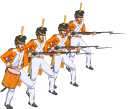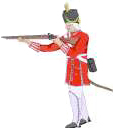Canada Day: the Story Behind the Holiday
Part 1: A Collection of Territories
Native Americans lived in Canada long before Europeans came. The resulting culture clash was, at times, bloody. The result was the colonization by settlers and soldiers from France and Great Britain.
And while America was involved in its Civil War (1861-1865), Canada was involved in a struggle of its own: to come to grips with the idea of forming one, large country. Canada in the early 19th Century was a jumbled mix of peoples and territories. Specifically, the British lived in Canada West and the French listed in Canada East. To add to the confusion, Canada West was also called Upper Canada and Canada East was also called Lower Canada, even though Lower Canada was at times farther north than Upper Canada. Next page > One Big Country > Page 1, 2 |
|
Social Studies for Kids
copyright 2002–2024
David White



 During
the colonial wars of the 17th and 18th centuries, Canada was
a battleground as well. The last great struggle between
France and Britain in the New World was the
During
the colonial wars of the 17th and 18th centuries, Canada was
a battleground as well. The last great struggle between
France and Britain in the New World was the  Fighting
between Americans and British took place in Canada in both
the American Revolutionary War (1775-1783) and the War of
1812 (1812-1814). The results of each of these wars included
further boundaries between America and Canada.
Fighting
between Americans and British took place in Canada in both
the American Revolutionary War (1775-1783) and the War of
1812 (1812-1814). The results of each of these wars included
further boundaries between America and Canada.

